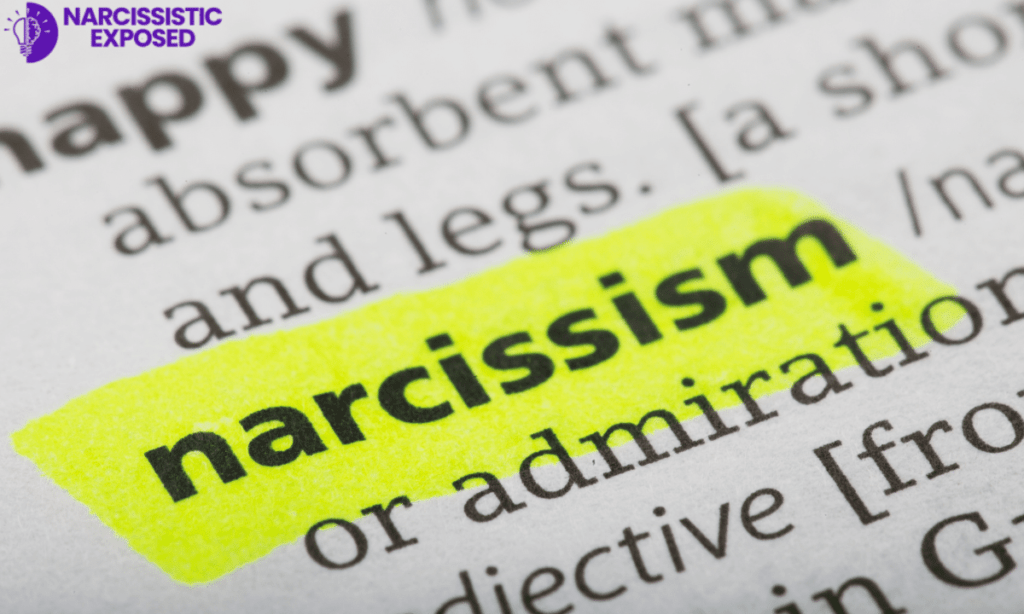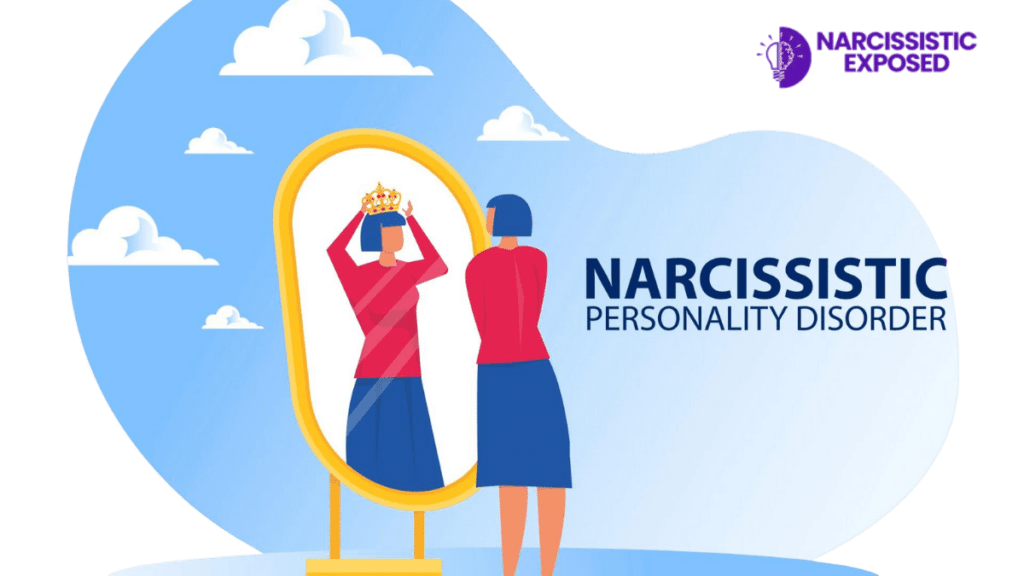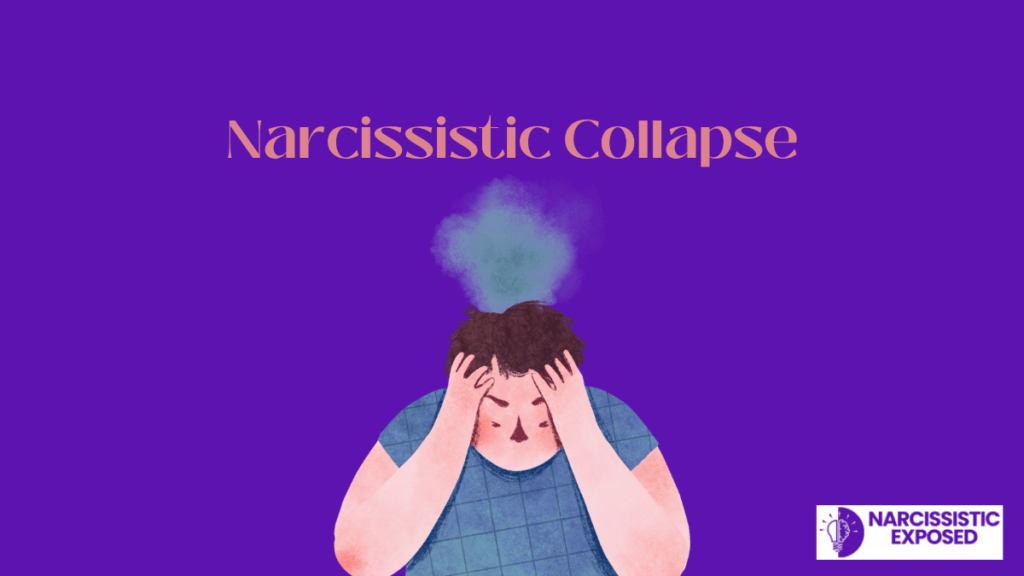
The importance of understanding vulnerable narcissism cannot be overstated. While overt narcissists may easily catch the eye with their flamboyant behavior, vulnerable narcissists might suffer in silence, their struggles often overshadowed by a façade of humility or masked by introversion. Unpacking this complexity is vital for mental health professionals and anyone striving to navigate personal or professional relationships more effectively. Recognizing and understanding the nuances of vulnerable narcissism opens the door to empathy and more nuanced interactions with those who exhibit these traits.
This article aims to provide a comprehensive exploration of vulnerable narcissism. We will begin by defining what vulnerable narcissism is and how it differs from other forms of narcissism. The subsequent sections will delve into the behavioral patterns typical of vulnerable narcissists, the dynamics of being in a relationship with someone exhibiting these traits, and the unique challenges and attractions in such relationships. Moreover, we will address the critical question of manipulation in the context of vulnerable narcissism. In an exclusive section, I will share my insights and reflections on the topic, offering a unique perspective that enriches the discourse. The article concludes with FAQs, providing encyclopedic, straightforward answers to common queries about vulnerable narcissism.
Join me in this insightful journey into the world of vulnerable narcissism, where we unravel its complexities and learn how to navigate its challenges with greater understanding and compassion.
Table of contents
What is Vulnerable Narcissism?
Definition and Characteristics
Vulnerable narcissism, sometimes referred to as covert narcissism, is a complex psychological condition characterized by a distinct set of traits that starkly contrast with the typical, overt form of narcissism. It involves fragile self-esteem, hypersensitivity to criticism, and an intense fear of rejection. Unlike their overt counterparts, who exhibit grandiosity and a dominant demeanor, vulnerable narcissists tend to be introverted, withdrawn, and plagued by feelings of inadequacy and inferiority. This internal turmoil often manifests in envy, a sense of victimhood, and passive-aggressiveness. Despite craving admiration and validation, those with vulnerable narcissism struggle with deep-seated insecurity and self-doubt.
Comparison with Other Forms of Narcissism
The contrast between vulnerable and overt (or classic) narcissism is striking. Overt narcissists are typically seen as confident, attention-seeking, and self-assured. They often display a sense of superiority and a relentless pursuit of power and prestige. On the other hand, vulnerable narcissists might appear shy or reserved, and their need for affirmation is not as apparent. They may internalize their feelings of grandiosity, making it harder for others to notice their narcissistic traits. This internalized nature of vulnerable narcissism can make it more challenging to identify and understand.
Psychological Underpinnings
The roots of vulnerable narcissism are often traced back to early developmental experiences. Childhood environments marked by neglect, inconsistent parenting, or emotional abuse can contribute to the development of these traits. The inconsistent validation during crucial developmental stages may lead to a fragile self-image and an unstable sense of self-worth in adulthood. Psychologically, vulnerable narcissism is often associated with anxiety, depression, and other mood disorders, indicating a complex interplay between narcissistic traits and emotional regulation difficulties.
Understanding vulnerable narcissism requires a nuanced approach that considers both the outward behaviors and the internal emotional landscape of individuals. Recognizing these traits can be the first step in addressing their challenges, both for those who exhibit and interact with them. As we move forward in this article, we will delve deeper into the behavioral patterns, relationship dynamics, and potential ways to navigate interactions with vulnerable narcissists.
Behavioral Patterns of Vulnerable Narcissists
Typical Behaviors and Reactions
Vulnerable narcissists exhibit a range of behaviors that can be both subtle and complex. Central to their experience is a pervasive sense of insecurity and inadequacy, often leading to defensiveness and avoidance of situations where they might face criticism or judgment. They might engage in self-deprecation, yet paradoxically, they are susceptible to how others perceive them. This sensitivity often results in overreactions to perceived slights or criticism, manifesting as anger, sadness, or withdrawal.
Socially, vulnerable narcissists may appear shy or introverted, often because they fear being exposed as inadequate. They have a strong desire for recognition and validation, yet they typically lack the overt charm and charisma of overt narcissists to secure this admiration. This longing for affirmation, coupled with their fear of rejection, creates a pattern of avoidance and social anxiety.
Emotional and Social Impact
The emotional landscape of a vulnerable narcissist is tumultuous. They often experience intense jealousy and envy, particularly towards those they perceive as more successful or confident. Internally, they struggle with a chronic sense of emptiness and dissatisfaction, a void they desperately seek to fill with external validation.
In social settings, their hypersensitivity can lead to strained relationships. Friends, family members, and colleagues may find it challenging to navigate their emotional volatility and tendency to misconstrue benign comments as personal attacks. This behavior can lead to a cycle of social isolation, reinforcing the vulnerable narcissist’s feelings of loneliness and inadequacy.
Case Examples
Consider the case of Alex, a 35-year-old professional. Outwardly, Alex appears humble and unassuming, often deflecting compliments and speaking modestly about his achievements. However, internally, Alex craves recognition and feels bitter when his colleagues are praised or promoted. He frequently contemplates minor interactions, interpreting offhand remarks as criticisms. Despite his desire for social connection, Alex’s fear of being negatively judged keeps him isolated, leading to feelings of loneliness and depression.
Another example is Sarah, a 40-year-old who often portrays herself as a victim of circumstances. She harbors resentment towards those she believes have wronged her and spends significant time ruminating over past slights. Sarah’s relationships are marked by passive-aggressive behavior and an expectation of unwavering support and sympathy from others.
These examples highlight the complex interplay of behaviors and emotions in vulnerable narcissism. Understanding these patterns is crucial for those interacting with vulnerable narcissists and for professionals who assist them in navigating their emotional world. In the following sections, we will explore how these dynamics play out in personal relationships and what strategies can be employed to manage them effectively.
Vulnerable Narcissism in Relationships
Dynamics in Personal Relationships
Vulnerable narcissism significantly impacts personal relationships, often creating a complex and challenging dynamic. In these relationships, the vulnerable narcissist’s deep-seated insecurity and sensitivity to criticism can lead to a constant need for reassurance and validation from their partner. They may perceive even minor slights as profound betrayals, leading to emotional turbulence and unpredictable reactions. Paradoxically, while they crave intimacy and closeness, their fear of rejection and abandonment often leads them to push others away, creating a push-pull dynamic that can be confusing and distressing for their partners.
Challenges for Partners
Being in a relationship with a vulnerable narcissist can be an emotional rollercoaster. Partners may find themselves constantly trying to appease and reassure the narcissist, walking on eggshells to avoid triggering their insecurities. The narcissist’s tendency to play the victim and manipulate situations to garner sympathy can leave partners feeling guilty and responsible for the narcissist’s emotional well-being. Over time, this can lead to frustration, exhaustion, and even resentment. Partners may also struggle with the lack of reciprocity in emotional support, as the vulnerable narcissist’s focus often remains inward.
Coping Strategies
Navigating a relationship with a vulnerable narcissist requires patience, understanding, and often professional guidance. Effective coping strategies include:
- Setting Boundaries: Establishing clear and firm boundaries is crucial. Partners need to communicate their own needs and limits calmly and assertively.
- Maintaining Personal Well-being: Partners must prioritize their mental and emotional health, engage in self-care practices, and maintain a supportive network of friends and family.
- Seeking Professional Help: Therapy can be beneficial both for the individual exhibiting vulnerable narcissism and their partner. Couples therapy, in particular, can help address the dynamics of the relationship in a safe and structured environment.
- Educating Oneself: Understanding the nature of vulnerable narcissism can provide valuable insights into the behavior and needs of the narcissist, fostering a more empathetic and informed approach to the relationship.
- Managing Expectations: Recognizing that change takes time and that some behaviors may not be completely alterable can help manage expectations and reduce frustration.
In summary, while relationships with vulnerable narcissists can be challenging, with the right strategies and support, it is possible to establish a more balanced and healthy dynamic. The following sections will further explore the complexities of vulnerable narcissism, offering insights into attraction dynamics, manipulation tactics, and personal reflections on this intriguing yet challenging personality trait.
Attraction and Vulnerable Narcissism
Who Vulnerable Narcissists Are Attracted To
Vulnerable narcissists often gravitate towards individuals who they perceive can meet their emotional needs and offer the validation and admiration they crave. They may be attracted to empathetic, caring, and nurturing people – qualities that vulnerable narcissists might find comforting and reassuring. They might also be drawn to individuals with a certain status or prestige, as associating with such individuals can bolster their fragile self-esteem.
Understanding the Attraction Dynamics
The attraction dynamic in relationships involving vulnerable narcissists is complex and often rooted in their psychological needs. Vulnerable narcissists’ attraction is not just about physical or emotional connection; it’s also about finding someone who can bolster their self-worth and validate their self-image. They often seek partners who can fill the emotional voids within themselves and provide the constant support and affirmation they need.
However, this dynamic can become problematic. The vulnerable narcissist’s dependency on their partner for self-esteem can lead to a one-sided relationship where the partner’s needs and feelings are overshadowed. Moreover, the hypersensitivity and insecurity of the narcissist can result in a relationship filled with emotional highs and lows, dependent on the level of validation and attention they receive.
Managing Attractions and Relationships
Managing a relationship with a vulnerable narcissist requires understanding and addressing the underlying dynamics of attraction:
- Recognition of Patterns: Both parties need to recognize and understand the patterns in their attraction and relationship dynamics. Awareness is the first step towards change.
- Communication: Open, honest, and non-confrontational communication can help address issues as they arise. It’s essential to express feelings and concerns in a way that is not perceived as threatening or critical to the vulnerable narcissist.
- Boundary Setting: Both partners must set and respect healthy boundaries. For the non-narcissistic partner, this means not losing sight of their needs and well-being.
- Seeking Professional Help: Therapy can be beneficial in understanding and managing the dynamics of the relationship. It can provide both partners tools and strategies for handling the attraction’s complexities and maintaining a healthier relationship.
- Self-Care and Support: Both partners should prioritize self-care. The non-narcissistic partner needs a strong support network and personal hobbies or interests to maintain emotional health.
Navigating attraction and relationships with a vulnerable narcissist is challenging but not impossible. With the right approach and professional guidance, it is possible to establish a more balanced and fulfilling relationship. Next, we will explore the manipulation tactics often associated with vulnerable narcissism and how to handle these behaviors effectively.
Manipulation and Vulnerable Narcissism
Understanding Manipulation Tactics
Manipulation is a common tactic used by individuals with vulnerable narcissism, although it might be less blatant than in overt narcissism. Their tactics often stem from their deep insecurities and need for validation. Common manipulative behaviors include guilt-tripping, playing the victim, passive-aggressive communication, and gaslighting. These tactics are employed to control or influence others, ensuring that their emotional needs are prioritized. It’s essential to recognize that these behaviors are often a defense mechanism rooted in the vulnerable narcissist’s feelings of inadequacy and fear of abandonment.
Recognizing Signs in Everyday Interactions
Identifying manipulative behaviors in everyday interactions with a vulnerable narcissist requires attentiveness and understanding of their subtleties. Key signs include:
- Shifting Blame: Frequently deflecting blame onto others and avoiding personal accountability.
- Victim Stance: Portraying themselves as misunderstood or mistreated to elicit sympathy and avoid criticism.
- Emotional Coercion: Using emotional outbursts or guilt to influence or control others’ actions.
- Subtle Threats: Making veiled threats or negative implications to get their way.
- Gaslighting: Making someone question their reality or sanity, often by denying or twisting facts.
Strategies for Handling Manipulative Behaviors
Dealing with manipulation from a vulnerable narcissist can be challenging, but there are effective strategies:
- Setting Boundaries: Establish what behaviors are unacceptable and stick to these boundaries consistently.
- Maintaining Emotional Distance: Avoid getting emotionally entangled. Stay calm and objective during interactions.
- Clear Communication: Be direct and transparent in your communication. Avoid ambiguity, which the narcissist could twist.
- Avoiding Power Struggles: Refrain from engaging in arguments or power struggles, as these can escalate the situation.
- Seeking Support: Consult with a therapist or counselor, significantly if the manipulative behaviors are affecting your mental health.
- Focusing on Facts: Stick to facts and reality, mainly when gaslighting occurs.
- Self-Care: Prioritize your emotional well-being to avoid being drained by the narcissist’s manipulative tactics.
Understanding and handling manipulation in the context of vulnerable narcissism requires patience and a strong sense of self. It’s about finding the balance between empathy for the narcissist’s struggles and safeguarding one’s emotional health. The next section of our article will delve into a personal and expert perspective on vulnerable narcissism, offering unique insights and reflections on this complex topic.
My Unique Perspective on Vulnerable Narcissism
Personal Opinion and Insights
As a writer deeply immersed in the study of personality disorders, I’ve come to view vulnerable narcissism not just as a clinical construct but as a lens through which we can understand broader social phenomena. My research and observations lead me to believe that vulnerable narcissism is often a response to the profound anxieties of our era. In this world, constant comparison, fierce competition, and the pursuing unrealistic ideals are the norm. This form of narcissism, I posit, is not just an individual failing but a reflection of the societal pressures we all navigate.
Relevance in Today’s Society
In an age dominated by social media and a culture that often values appearance over substance, the traits of vulnerable narcissism can be magnified and even normalized. The paradoxical blend of fragility and entitlement inherent in vulnerable narcissism mirrors the conflicting messages of our times – to be the best, yet never good enough. Recognizing these traits in this broader context is crucial. It helps us understand that vulnerable narcissists are not just challenging individuals but also products of a society that inadvertently fosters these traits.
How This Understanding Can Be Applied
Understanding vulnerable narcissism’s roots and expressions has profound implications. For mental health professionals, it calls for a treatment approach that balances empathy with firm boundaries. For educators and parents, it underscores the importance of fostering environments that value authenticity and resilience over perfection.
This knowledge can inform more compassionate leadership and healthier organizational cultures in the workplace. On a personal level, understanding vulnerable narcissism can lead to more forgiving and constructive interactions with those who exhibit these traits. It empowers us to respond to the behavior and the person behind it, with all their complexities and unmet needs.
As we move towards a more nuanced understanding of vulnerable narcissism, we open doors to more effective interventions, healthier relationships, and a society that recognizes the value of authentic self-esteem over fragile egos. Our exploration of this topic concludes with a set of FAQs, aiming to provide clear, concise answers to common questions about vulnerable narcissism.
Frequently Asked Questions (FAQs)
How does a vulnerable narcissist behave?
Vulnerable narcissists often exhibit behaviors characterized by insecurity, hypersensitivity to criticism, and a strong need for affirmation. They may seem shy or withdrawn and usually feel misunderstood or victimized. Their behaviors can include passive-aggressiveness, envy, and emotional volatility. Despite their outward appearance of possible humility or introversion, they have an underlying need for admiration and struggle with inadequacy.
What is it like to be in a relationship with a vulnerable narcissist?
Being in a relationship with a vulnerable narcissist can be emotionally challenging and complex. These relationships often involve a cycle of emotional highs and lows, with the partner of the narcissist feeling the need to provide affirmation and reassurance constantly. The narcissist’s hypersensitivity and insecurity can lead to misunderstandings and conflicts. Partners may feel drained, as their own emotional needs are often sidelined due to the narcissist’s self-focused nature.
Who are vulnerable narcissists attracted to?
Vulnerable narcissists are often attracted to individuals who provide them with the validation and admiration they crave. They may seek empathetic, nurturing, or highly accommodating partners willing to support their emotional needs. They might also be drawn to individuals who possess qualities or statuses they aspire to, as this association can boost their self-esteem.
Are vulnerable narcissists manipulative?
Yes, vulnerable narcissists can be manipulative, though their tactics may be subtler than those of overt narcissists. Their manipulation often stems from their insecurities and unmet emotional needs. Common tactics include guilt-tripping, playing the victim, passive-aggressive behaviors, and sometimes gaslighting to gain sympathy, control, or attention.
Can therapy help someone with vulnerable narcissism?
Yes, therapy can be highly beneficial for individuals with vulnerable narcissism. Therapeutic approaches like cognitive-behavioral therapy (CBT) can help them understand and manage their emotions, develop healthier self-esteem, and learn better ways of relating to others. Therapy can also address underlying issues contributing to their narcissistic traits.
Is there a difference between vulnerable narcissism and borderline personality disorder?
Yes, while there are overlaps, such as fear of abandonment and emotional volatility, there are distinct differences. Borderline personality disorder (BPD) is characterized by more intense emotional disturbances, fears of abandonment, and unstable relationships. Vulnerable narcissism primarily involves excessive self-focus, need for validation, and sensitivity to how others perceive them.
How can one handle conflict with a vulnerable narcissist?
Handling conflict with a vulnerable narcissist requires a careful, empathetic approach. It’s important to stay calm and avoid direct criticism, which can trigger their defenses. Using ‘I’ statements to express feelings and needs, setting clear boundaries, and seeking mutual understanding can be effective. If conflicts are frequent or severe, professional guidance may be needed.
Understanding vulnerable narcissism is vital to navigating relationships and interactions with those exhibiting these traits. With empathy, clear communication, and appropriate boundaries, it’s possible to manage these relationships more effectively.
Conclusion
Summarizing Key Takeaways
Our journey through the intricate world of vulnerable narcissism has unveiled the complexity of this often misunderstood condition. We’ve learned that deep-rooted insecurities, a constant need for validation, and a tendency towards hypersensitivity and emotional volatility characterize vulnerable narcissism. Unlike overt narcissism, it manifests in more subtle, introverted ways, making it harder to recognize but no less impactful. We’ve explored its presence in personal relationships, the dynamics of attraction, the subtle art of manipulation inherent in vulnerable narcissism, and strategies to manage these challenges effectively.
Encouraging Continued Learning and Understanding
Understanding vulnerable narcissism is crucial in fostering healthier relationships, whether personal or professional. It encourages empathy and patience in dealing with individuals who exhibit these traits and provides insight into the broader societal influences that shape such behaviors. Continued learning and awareness about vulnerable narcissism are imperative, as they deepen our understanding not only of the condition but of the human condition itself.
Final Thoughts and Recommendations
As we conclude, I encourage readers to approach vulnerable narcissism with a balanced perspective, recognizing the struggles inherent in the condition while also maintaining healthy boundaries. For those who see these traits in themselves or their loved ones, seeking professional help can be a valuable step toward healing and growth. Above all, remember that understanding and compassion are key in dealing with all forms of narcissism.
Vulnerable narcissism, with its complexities and nuances, challenges us to look beyond surface behaviors and to understand the more profound emotional currents at play. Doing so opens the door to more meaningful interactions, personal growth, and a deeper understanding of the human psyche.





